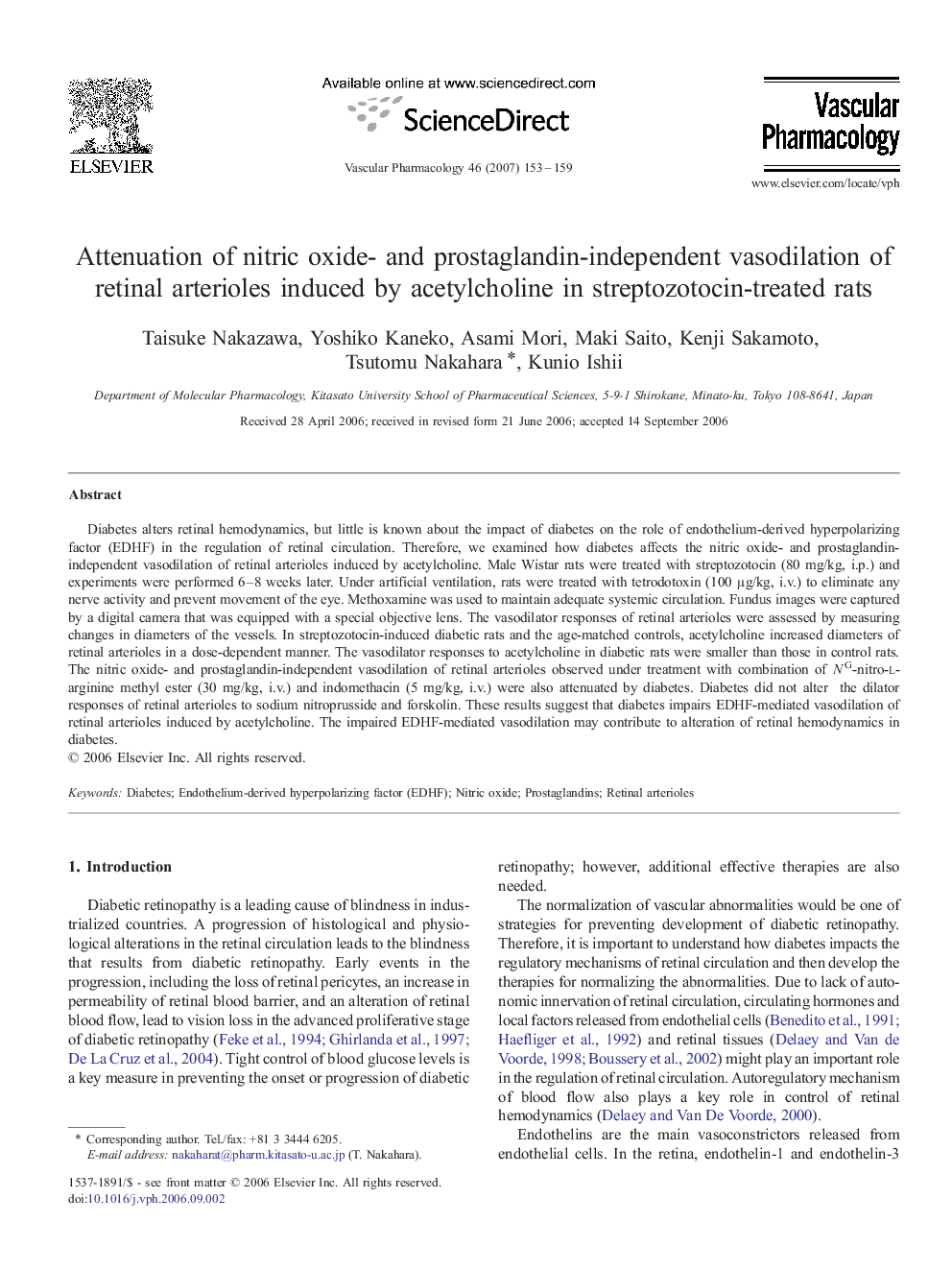| Article ID | Journal | Published Year | Pages | File Type |
|---|---|---|---|---|
| 2574976 | Vascular Pharmacology | 2007 | 7 Pages |
Diabetes alters retinal hemodynamics, but little is known about the impact of diabetes on the role of endothelium-derived hyperpolarizing factor (EDHF) in the regulation of retinal circulation. Therefore, we examined how diabetes affects the nitric oxide- and prostaglandin-independent vasodilation of retinal arterioles induced by acetylcholine. Male Wistar rats were treated with streptozotocin (80 mg/kg, i.p.) and experiments were performed 6–8 weeks later. Under artificial ventilation, rats were treated with tetrodotoxin (100 μg/kg, i.v.) to eliminate any nerve activity and prevent movement of the eye. Methoxamine was used to maintain adequate systemic circulation. Fundus images were captured by a digital camera that was equipped with a special objective lens. The vasodilator responses of retinal arterioles were assessed by measuring changes in diameters of the vessels. In streptozotocin-induced diabetic rats and the age-matched controls, acetylcholine increased diameters of retinal arterioles in a dose-dependent manner. The vasodilator responses to acetylcholine in diabetic rats were smaller than those in control rats. The nitric oxide- and prostaglandin-independent vasodilation of retinal arterioles observed under treatment with combination of NG-nitro-l-arginine methyl ester (30 mg/kg, i.v.) and indomethacin (5 mg/kg, i.v.) were also attenuated by diabetes. Diabetes did not alter the dilator responses of retinal arterioles to sodium nitroprusside and forskolin. These results suggest that diabetes impairs EDHF-mediated vasodilation of retinal arterioles induced by acetylcholine. The impaired EDHF-mediated vasodilation may contribute to alteration of retinal hemodynamics in diabetes.
